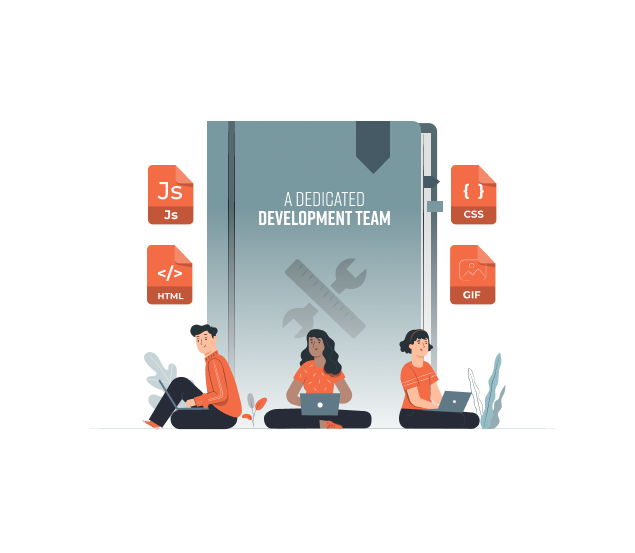Software engineering metrics are essential tools for evaluating software development projects’ performance. They provide objective, quantifiable data that help track progress, pinpoint improvement areas, and guide decision-making within the development process.
In software development, metrics play a pivotal role in assessing and enhancing software quality, the development process’s efficiency, and the team’s effectiveness. Moreover, it is crucial to monitor software performance once deployed.
This blog discusses the significance of software engineering metrics, common metrics, their application in tracking progress and improvement areas, benchmarking performance and communication with stakeholders, and their utilization throughout the software development life cycle.
Common Software Engineering Metrics and Their Importance:
Lines of Code (LOC):
A measurement of the codebase size, LOC helps estimate the effort required for software development and maintenance. It indicates the codebase complexity and the effort needed to maintain it.
Cyclomatic Complexity:
This metric measures code complexity, highlighting difficult-to-understand or test areas. A high cyclomatic complexity number may signify that the code is challenging to maintain and prone to errors, which can improve the codebase’s maintainability.
Defect Density:
A metric calculating the number of defects per code unit, it identifies error-prone code areas. A low defect density indicates high-quality code, aiding in enhancing the codebase quality.
Code Coverage:
This metric demonstrates the portion of code exercised by tests, identifying insufficiently tested code areas. High code coverage indicates well-tested code, improving the codebase’s robustness and reliability.
Lead Time:
The duration it takes to complete a task from start to finish, this metric helps understand the time it takes to deliver a feature to the customer. By measuring lead time, teams can improve the delivery process and address customer needs more effectively.
Deployment Frequency:
A metric illustrating how often software is deployed, measures the time it takes to deliver changes to the customer. Teams can identify ways to enhance the delivery process and address customer needs more effectively by measuring deployment frequency.
Mean Time to Recovery (MTTR):
The average time it takes for the system to recover from a failure this metric helps understand the system’s recovery ability. By measuring MTTR, teams can improve the system’s recovery ability and minimize downtime.
Change Failure Rate:
The percentage of changes resulting in a failure, this metric measures the quality of changes made to the system. By measuring the change failure rate, teams can enhance change quality and reduce the risk of introducing new defects.
These metrics enable teams to measure and improve software development projects’ performance, resulting in a more efficient and effective process. By tracking these metrics over time, teams can identify improvement areas, make informed decisions, and deliver superior software to customers.
Read More : Bespoke Software Development: Everything You Need To Know
Using Metrics for Progress Tracking and Improvement Identification
Software engineering metrics can track software development project progress and reveal areas for improvement.
For example, teams can monitor lines of code (LOC) over time, identifying if the codebase is growing unsustainably and adjusting accordingly.
Similarly, tracking defect density can reveal if the codebase quality is improving or deteriorating, prompting necessary adjustments.
Metrics can also pinpoint specific code areas needing attention. High cyclomatic complexity in a module might indicate a need for refactoring, while low code coverage could signify insufficient test cases.
Additionally, metrics can identify trends and patterns for predicting future performance.
Software engineering metrics help teams track progress, identify improvement areas, and make informed decisions, resulting in a more efficient development process.
Benchmarking Performance and Communicating with Stakeholders
Software engineering metrics aren’t just for internal use; they’re also great tools for benchmarking your team’s performance against industry standards and keeping stakeholders in the loop.
Comparing metrics like defect density, code coverage, and lead time to industry averages gives you a clear picture of how your team stacks up against the competition. This insight can help you identify your strengths and pinpoint areas that need improvement.
These metrics are also essential for communicating your progress and performance to stakeholders. Regular updates on metrics like lines of code, defect density, and code coverage can help them understand the strides you’re making in the project and the overall quality of your codebase.
When sharing this data with stakeholders, make sure it’s clear, concise, and easy to grasp. Visualization tools like charts, graphs, and dashboards can go a long way in making the data more accessible and comprehensible. Don’t forget to provide context, too, such as comparing your metrics to industry standards and explaining what the data means for the project overall.
In a nutshell, software engineering metrics are valuable for benchmarking your team’s performance and keeping stakeholders informed about your progress. By regularly sharing these metrics, you can ensure that everyone stays on the same page and clearly understands the project’s quality and development.
Metrics in the Software Development Life Cycle
Software engineering metrics are crucial for enhancing performance throughout the software development life cycle (SDLC). They help teams pinpoint areas needing improvement and make necessary adjustments. Let’s take a look at how these metrics come into play during each phase:
Planning:
Lines of code (LOC) and cyclomatic complexity help estimate the effort needed to develop software and identify complex code sections that may be harder to understand or test.
Design:
Defect density and code coverage reveal code areas prone to errors or lacking sufficient testing.
Development:
Lead time and deployment frequency track progress, spotlighting areas needing improvement.
Testing:
Mean time to recovery and change failure rate evaluate codebase robustness and reliability.
Deployment:
User engagement and system uptime assess software performance once it’s deployed.
Keeping tabs on software performance post-deployment is also essential to understand how well it meets customer needs and performs in real-world conditions.
In short, software engineering metrics play a vital role in measuring and enhancing performance throughout the SDLC, streamlining the process, and boosting its efficiency and effectiveness.
Also read : How to Create a Perfect Software Development Plan [With Template]
Conclusion
Software engineering metrics are key to boosting software development performance. They provide trackable data for progress, improvements, and better decision-making.
Metrics like lines of code, defect density, and deployment frequency help teams stay on track and improve. Comparing performance to industry standards and keeping stakeholders informed ensures efficiency and better software for customers.
Software engineering metrics matter because they enable teams to measure and improve the quality and effectiveness of their software development process. At Neoito, we understand the importance of metrics and leverage our expertise and tools to give our clients the insights they need to optimize their development process and achieve their goals. Please don’t hesitate to contact us today.
FAQs
What are software engineering metrics?
Software engineering metrics are quantifiable measures that can be used to track and evaluate the quality and efficiency of software development processes.
Why are software engineering metrics important?
Software engineering metrics provide visibility into the progress of a project, helping stakeholders understand whether the project is on track, and identifying areas that need improvement. They also enable teams to identify and resolve issues early in the development cycle, reducing the risk of costly errors and delays.
What are some common software engineering metrics?
Some common software engineering metrics include code complexity, code coverage, defect density, and cycle time. These metrics can provide insights into different aspects of the development process, such as code quality, testing effectiveness, and overall efficiency.
How can software engineering metrics be used to optimize the development process?
By tracking software engineering metrics and analyzing the data, teams can identify areas of improvement and take proactive steps to enhance the quality and efficiency of their development process. For example, if code complexity is identified as a problem area, the team can work to simplify the code and reduce the risk of errors. Similarly, if testing is taking too long, the team can look for ways to automate testing and reduce cycle time.




